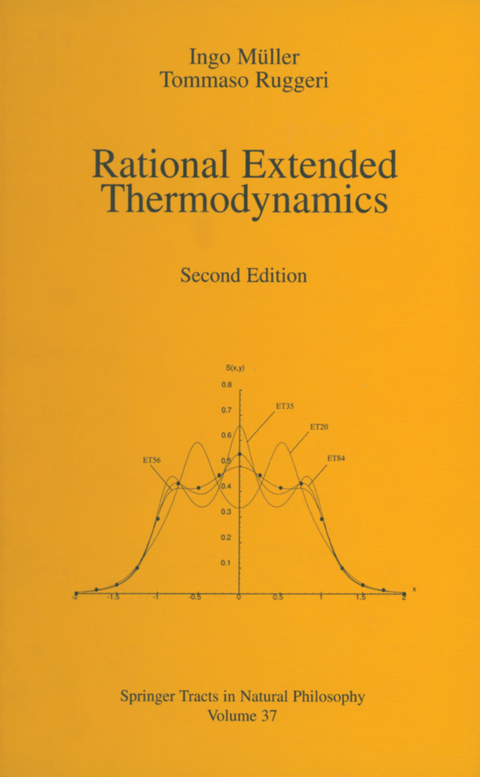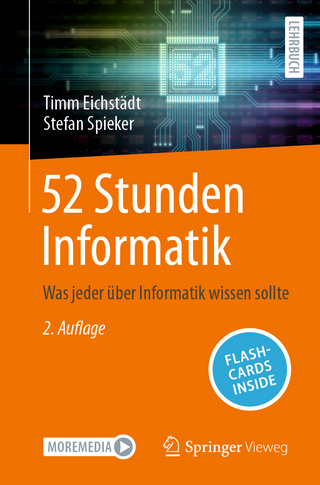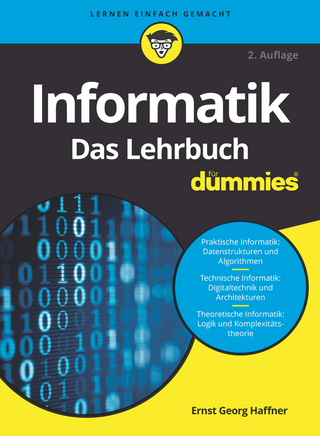
Rational extended thermodynamics
Springer-Verlag New York Inc.
978-1-4612-7460-5 (ISBN)
1 Tour d’Horizon.- 2 Early Version of Extended Thermodynamics and Kinetic Theory of Gases.- 1 Paradoxes of Heat Conduction and Shear Diffusion.- 2 Paradox Removed.- 3 Kinetic Theory of Monatomic Gases.- 3 Formal Structure of Extended Thermodynamics.- 1 Field Equations.- 2 Entropy Inequality and Symmetric Hyperbolic Systems.- 3 Main Subsystems.- 4 Galilean Invariance.- 5 Thermodynamics of an Euler Fluid.- 4 Extended Thermodynamics of Monatomic Gases.- 1 The Equations of Extended Thermodynamics of Monatomic Gases.- 2 Constitutive Theory.- 3 Field Equations and the Thermodynamic Limit.- 4 Thermal Equations of State and Ideal Gases.- 5 Thermodynamics of Mixtures of Euler Fluids.- 1 Ordinary Thermodynamics of Mixtures (TIP).- 2 Extended Thermodynamics of Mixtures of Euler Fluids.- 3 Ordinary and Extended Thermodynamics of Mixtures.- 6 Relativistic Thermodynamics.- 1 Balance Equations and Constitutive Restrictions.- 2 Constitutive Theory.- 3 Identification of Viscosities and Heat-Conductivity.- 5 An Application: The Mass Limit of a White Dwarf.- 6 The Relativistic Kinetic Theory for Nondegenerate Gases.- 7 The Nonrelativistic Limit of Relativistic Thermodynamics.- 7 Extended Thermodynamics of Reacting Mixtures.- 1 Motivation, Results, and Discussion.- 2 Fields.- 3 Field Equation.- 4 Entropy Inequality.- 5 Nonrelativistic Limit.- 8 Waves in Extended Thermodynamics.- 1 Hyperbolicity and Symmetric Hyperbolic Systems.- 2 Linear Waves.- 3 Hyperbolicity and Nonlinear Waves..- 4 Acceleration Waves.- 5 Weak Solutions and Shock Waves.- 9 Extended Thermodynamics of Moments.- 1 Field Equations for Moments.- 2 Characteristic Speeds.- 3 Mean Eigenfunctions.- 4 Maximization of Entropy.- 10 Extended Thermodynamics and Light Scattering.- 1 Basic Electrodynamics.- 2 A Modicum of FluctuationTheory.- 3 Measuring the Spectral Density.- 4 Navier-Stokes-Fourier Fluid.- 5 Extended Thermodynamics.- 6 Extrapolation of S(q, ?) for y ? 0.- 11 Testing Extended Thermodynamics by Sound.- 1 Basic Acoustics.- 2 Dispersion Relations.- 3 Maximum Speed.- 12 Structure of Shock Waves.- 1 Experimental Evidence.- 2 Review of Previous Work.- 3 Preliminaries on Singular Points and Characteristic Speeds.- 4 Numerical Calculation of the Shock Structure.- 5 Conclusion.- 6 Addendum on Initial Value Problem for 13 Moments.- 7 Quantitative Results and Conclusions.- 13 Extended Thermodynamics of Radiation.- 1 Structure of Extended Thermodynamics of Photons.- 2 Equilibrium.- 3 Near Equilibrium.- 4 Field Equations.- 5 Local Radiative Equilibrium.- 6 Compression of Radiation.- 7 Penetration of a Beam of Radiation into Matter.- 8 Radiative Entropy in Gray Bodies.- 14 Extended Thermodynamics of Phonons.- 1 Phonon Transfer Equation.- 2 Moments and Moment Equations.- 3 The Heat Pulse Experiment.- 15 Thermodynamics of Metal Electrons.- 1 Equations of Balance.- 2 Extended Thermodynamics and Kinetic Theory.- 16 Viscoelastic Fluids.- 1 Viscoelastic Fluids of Second Grade.- 2 Rate-Type versus Differential-Type Constitutive Equations.- 3 Toward Extended Thermodynamics of Viscoelasticity.
| Reihe/Serie | Springer Tracts in Natural Philosophy ; 37 |
|---|---|
| Zusatzinfo | XV, 396 p. |
| Verlagsort | New York, NY |
| Sprache | englisch |
| Maße | 155 x 235 mm |
| Themenwelt | Mathematik / Informatik ► Informatik ► Theorie / Studium |
| Naturwissenschaften ► Physik / Astronomie ► Mechanik | |
| Naturwissenschaften ► Physik / Astronomie ► Thermodynamik | |
| ISBN-10 | 1-4612-7460-5 / 1461274605 |
| ISBN-13 | 978-1-4612-7460-5 / 9781461274605 |
| Zustand | Neuware |
| Informationen gemäß Produktsicherheitsverordnung (GPSR) | |
| Haben Sie eine Frage zum Produkt? |
aus dem Bereich


